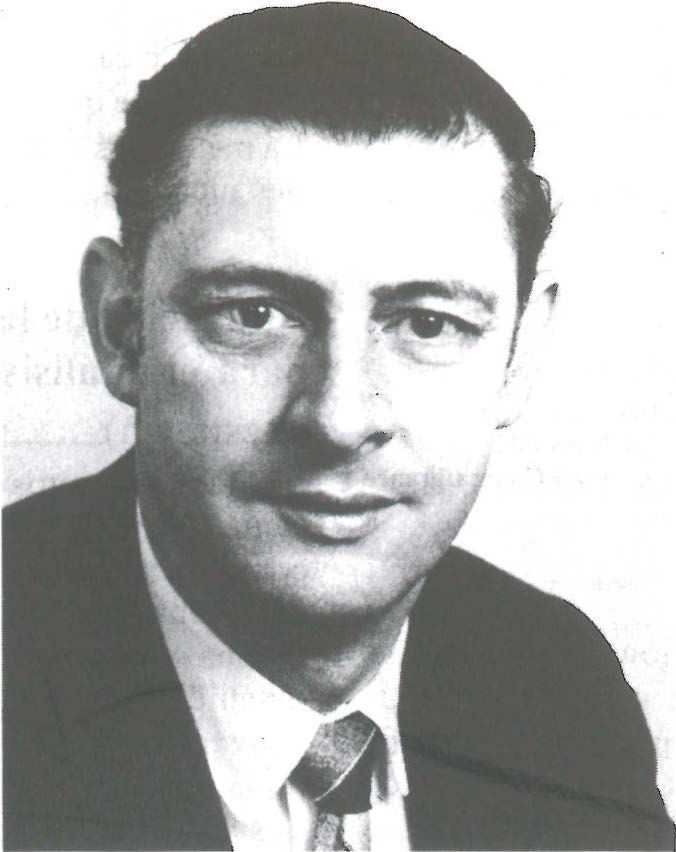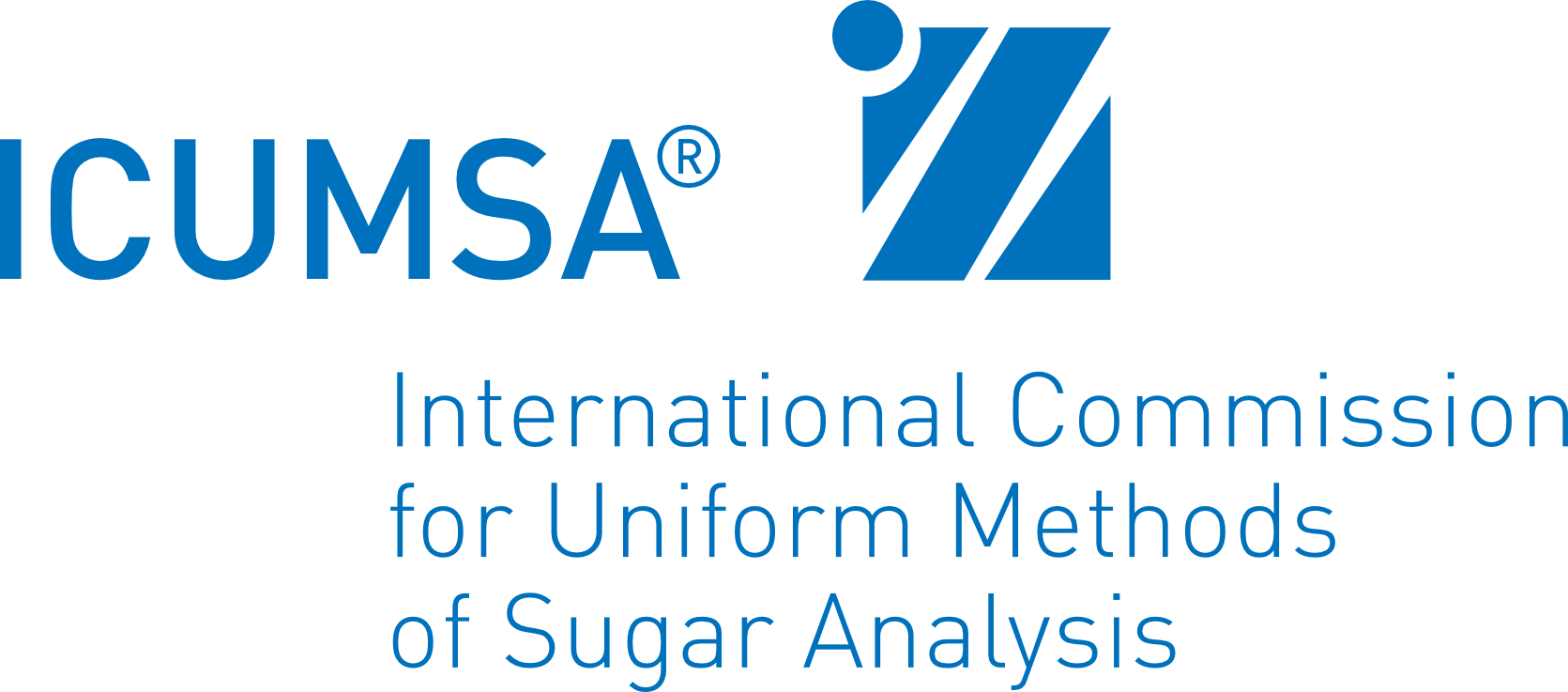Editor: R. Pieck, Klein Spanuit 9, B-3300 Tienen, Belgium. Tel. 016181 24 36, Tx 222 51, Fax 0103216182 03 17
The President’s Article
Introduction
It is now just over one year since the 19th Session in Cannes. In that lime many changes have been made which affect the future directions of ICUMSA. At the time of my election to the Presidency there was also a clear call for some reforms which would make our Commission more effective as it approaches the 21st century. One of the first actions of the new administration was the formation of a special Committee chaired by the President and assisted by Professor Mantovani and Mr Faviell. This Committee produced proposals which were debated and modified by interested National Committees and finally voted upon and approved by the Executive Committee.

Dr. M. R. Player
Reorganization of Subjects
In order that the Commission gives the highest priority to matters affecting analytical methods used by industry and commerce, it has been decided to have nine General Refereeships devoted specifically to those areas in which ICUMSA methods are most used. The General Referees appointed to these subjects will be responsible for keeping in touch with user laboratories, the requirements of the trade as well as technical advances which might lead to new methods. Their referee’s reports will bring forward issues which call for resolution with respect to all analytical methods used in the analysis of the product designated by their subject. One of the conseqences of this new organization is that analytical methods for a particular constituent can vary from product to product but it is incumbent upon referees to aim for uniformity wherever possible. One could say that the new system will be “enduser” driven. As an organization we cannot foist something on an unwilling customer. His interests should be the vital concern of the General Referee looking after the particular subject of interest.
Supporting the General Referee will be twenty-one Refereeships of the type we have become accustomed to. These refereeships deal with:
a) fundamental properties like density, refractive index, specific rotation,
b) the constituents commonly analyzcd like sucrose, reducing sugars, ash, dry substance,
c) important analytical techniques like polarimetry, spectrophotometry, HPLC methods,
d) some miscellaneous subjects needed for the good order of the Commission, like constitution and by-laws, method format, collaborative testing, apparatus and reagents.
It is expected that much of the work of these refereeships will come from the recommendations produced by the General Referee subjects. For example, if a need for a new non-toxic clarifying agent for the polarization of sugar products emerges because of environmental concerns, this will be identified by the General Referee of the various products affected. The work which needs to be done will be directed to those subjects best qualified to tackle the task. There are, of course, many other examples of how work will be initiated but it is the hope that the new arrangements will allow priorities to be debated so that scarce resources are better used.
Table 1: List of Refereeships
General Refereeships
1. Raw sugar (cane and beet) R.J. McCowage (Australia)
2. White sugar (cane and beet) C.W. Harwey (Britain)
3. Refined sugar products other than white sugars R. Plews (Britain)
4. Molasses (cane and beet) D.S. Martin (Britain)
S. Cane A. Brokensha (South Africa)
6. Beet W. Mauch (Germany)
7. Cane sugar processing M.A. Clarke (USA)
8. Beet sugar processing J.P. Lescure (France)
9. Starch derived sweeteners
Refereeships
1. Constitution and by-laws M.R. Player (Australia)
2. Apparatus and reagents S.A. Brooks (West Indies)
3. Method format, collaborative testing and statistical treatment of data MA. Godshall (U.S.A.)
4. Polarimetry A. Emmerich (Germany)
5. Quartz plates K. Zander (Germany)
6. Spectrophotometry G. Mantovani (Italy)
7. Colour, turbidity and reflectance measurement S. Akoglu (Turkey)
8. GLC method N. Kubadinow (Austria)
9. HPLC method K.J. Schäffler (South Africa)
10. Enzymatic and immunological methods
11. Density H. Wagenbreth (Germany)
12. Rheology R. Broadfoot (Australia)
13. Refractive Index K. Rosenbruch (Germany)
14. Microbiology R. Strauss (Germany)
15. Reducing sugars J. Laursen (Denmark)
16. Ash J.P. Ducatillon (France)
17. Dry substance G. Vaccari (Italy)
18. Sucrose
19. Oligosaccharides and polysaccharides K. Thielecke (Germany)
20. Ion-selective electrodes and ion chromatography P. Bourlet (France)
21. Special Projects
Referee Appointments
The new refereeships and the Referees appointed to them arc set out in Table 1. Where there are gaps, the refcreeship is still being discussed with the nominee, and an announcement will be made later. The new Referees and National Committees are now seeking the assistance of people to serve as Associate Referees. If any readers would like to contribute to the work of the Commission they should contact their National Committee or the Referee of the subject of interest.
Re-allocating 19th Session Recommendations
The work of the Commission till 1990 is set out in the Recommendations approved at Cannes. The next task to be undertaken is the re-allocation of these Recommendations among the new Referees. The President proposes to appoint a Steering Committee to oversee this re-allocation as well as the setting of priorities because it is not expected that all the work involved could be completed by the next Session. Members of this Steering Committee will be announced later.
Working Group on Collaborative Studies
A working group headed by Dr Margaret A. Clarke and assisted by Drs H. Schiweck, J. Degeest, A. Emmerich, R. Wood and Messrs A. Brown and C. lvin contributed to the proposals put to the recent lUPAC workshop on harmonization of collaborative studies. ICUMSA accepts that, for the future, it must keep in step with standards required by fraternal organizations if mutual acceptance of each other’s methods is to be expected. It is expected that comprehensive proposals for collaborative testing will be put at the 20th Session based on the findings of the working group. A report by Dr Margaret A. Clarke on progress to date is given below. With the appointment of Mrs Mary An Godshall as Referee for the new Subject 3, the work on collaborative testing will now be undertaken there, but in close collaboration with Dr Clarke.
New Methods Book
Plans to produce a new methods book are underway. One of the early tasks will be agreeing on a format for methods and whether methods should be put out in a bound volume or alternatively, in loose leaf form in a binder.
Publications Committee
The mayor task of producing the Proceedings of the 19th Session is complete, and the Proceedings will shortly be available from the Publications Department at a cost of 36 £ Sterling by air mail or 28 £ by surface mail. Orders may be sent to:
ICUMSA Publications Department c/o British Sugar pie, Research Laboratories, Colney, Norwich, NR.4 7UB, United Kingdom.
The publication of ICUMSA News will initially take place three times a year in five sugar journals (International Sugar Journal, Sugar y Azucar, Zuckerindustrie, L’lndustria Saccharifcra ltaliana and Listy Cukrovarnickc) and other journals have been invited to take it. Dr R. Pieck is editor though responsibility for the material published is taken by the officers of ICUMSA. Contributions by way of letters to the editor, comments on issues, personal notes are invited from our readership. In future, Referees will discuss important issues in their subject area.
The Publications Committee is also undertaking the production of a history of ICUMSA before our centenary. Mr Ron Plews has accepted the position of General Editor of this history. People interested in making a contribution should get in touch with Mr Plews.
Higher Levies
In the recent ballot approving changes to the subjects of ICUMSA, it was also agreed that the four yearly levy should be increased 50 % so that the Commission could be more self-reliant with respect to its publications. In the past ICUMSA has relied heavily on the generosity of British Sugar pie in the publication of the Proceedings and the periodic publication of a book of methods. With the higher dues it is expected that the Commission will meet the true cost of producing its publications without needing to have individual sugar companies underwriting the costs before sales revenue comes to hand.
ICUMSA Working Group on Collaborative Studies
by Dr M.A. Clarke
On May 4-5, 1987, the IUPAC Workshop on the Harmonization of Collaborative Analytical Studies met at the ISO Central Secretariat in Geneva. The ICUMSA Working Group was represented by R.F. Madsen (DDS), G.P. Steinle (Süddeutsche Zucker-AG) and R.W. Wood (M.A.F.F.).
Agreement was reached on the minimum requirements for a collaborative study, defined as an interlaboratory study in which each laboratory uses the defined method of analysis to analyze identical portions of homogeneous materials to assess the performance characteristics obtained using that method of analysis. Symbols and terms were defined; the minimum number of participating laboratories was set at 8, and the minimum number of materials at 5, with provision for smaller numbers under severely extenuating circumstances.
The identification of replicate samples was discouraged, and the use of split-level design for sample selection, with blind duplicates (not announced in the study procedure) was encouraged.
Recommendations on statistical procedure included limits on the number of significant figures; the use of ANOV A as a compulsory analysis; and the following procedure (the subject of extensive discussions) for calculation of precision estimates:
“The precision estimates are to be calculated
(a) with no outliers removed, and
(b) with outliers removed by the following protocol:
9.1. Calculate the mean, repeatability relative standard deviation and reproducibility relative standard deviation with no outlying laboratories removed but utilizing only valid data.
9.2. Remove any laboratories that are flagged as outliers by the Cochran 1-tail test at P-0.01.
9. 3. Remove any laboratories that arc flagged by the Grubbs and/or the double Grubbs (2 outliers at the same end or one at each end) 2-tail test at P – 0.01.
9.4. Stop outlier removal if more than 22 % (2 of 9 laboratories) are removed. (The number of laboratories that would be removed if the procedure was continued may also be reported.)
9.5. Recalculate the parameters as in 9.1. with the laboratories flagged by the preceding procedure removed.
9,6. The Grubbs tests should be applied only to laboratory means, not to individual values of replicated designs, since these values are not independent.”
Form and content of a final report were outlined. Organizations may superimpose any additional requirements on the recommendations for their specific needs. The IUPAC report was circulated to the Working Group. During the CITS Congress in Ferrara, June 8-12, many members of the Working Group were present and met to discuss and approve these recommendations. These, along with specific recommendations from individual group members, will be included in the final report of the Working Group, which will be submitted in August 1987. Copies of the IUPAC Harmonization Report are available from Dr M. A. Clarke.
